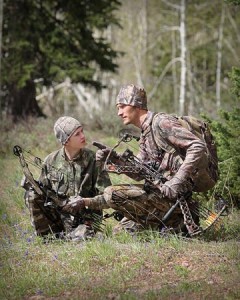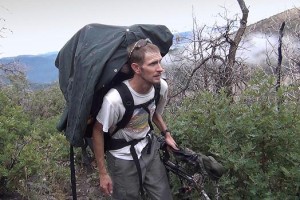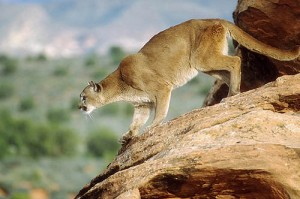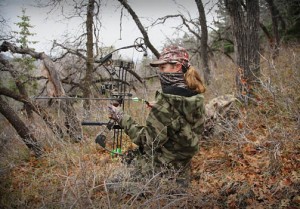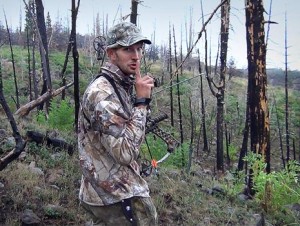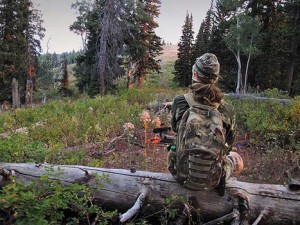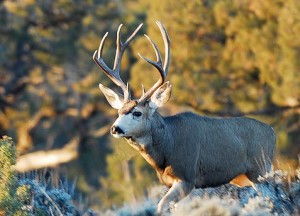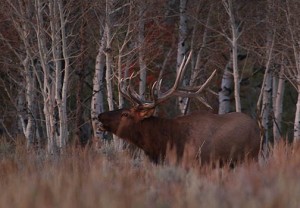The Future of Hunting Part 2
This is Part 2 of 2 articles addressing changes to hunting in the future. In Part 1 we explored possible evolutionary changes in the animals we hunt through the process of adaptation and evolution. In Part 2 we’ll explore possible changes in hunters to find better success in the future.
Both elk and deer are becoming both smarter and physically capable of evading new hunting technology and methods. As a result, today’s hunters must adapt along with them or be left behind.
After three decades of big game hunting, I’ve observed a split–or chasm–developing between traditional deer hunters and the new super-hunters. Basically there will be no “middle-class” of bowhunters in the future.
In the future, hunters will be divided into two camps based on their willingness to adapt to modern animals. These two camps are: a) Extreme wilderness athletes (or super-hunters) willing to spend tremendous resources for trophy-class animals, and b) Fair-weather hunters who spend little time afield, hunt mostly for fun rather than food, hunt mostly on weekends, and are happy with any size animal, or even no animal.
The following will separate the new hunter from the traditional hunter:
- The future belongs to the EWAs! (EWAs are Extreme Wilderness Athletes). EWAs find time each day to work on their health via diet and physical training. It might not be critical to be “extreme,” but you’ll still need to be a wilderness athlete (or a WA). Being a WA simply means having the ability to get to the animals no matter where they are. The bigger the buck, the harder you’ll work for it. The greatest difference between successful and unsuccessful hunters is physical fitness. Out-of-shape hunters simply can’t drag their butts up to where the deer are. Today’s superbucks expect hunters to only make it so far. And where the hunter stops, the deer begins. I know it sounds pretty obvious, but the guy riding around on the four-wheeler will have far less luck than the guy burning boot leather in the steep stuff.
- EWAs scout more than they hunt. Scouting isn’t optional; scouting is hunting. With fewer trophy opportunities in the future, you’ll need to locate deer and prime habitat well before the hunting season begins. Scouting not only means locating game, but devising a Plan A, B, C, and D.
- EWAs don’t have to worry where the deer falls; they can always get it out. In the past, many hunters refused to hunt very far from the road because they couldn’t get the animal out. Not anymore. Wilderness athletes train hard enough to get anything out of anywhere. And if they can’t do it alone, they’ll enlist help from friends or use horses for the job. I spend about 25 day hunting deer each year. As much as I love the time afield, I’d still rather drag a deer out on day one. Whenever I catch myself making excuses for not going far enough, I remind myself of that it’s much easier (both mentally and physically) to spend a couple days dragging a superbuck out of some hell-hole than to keep hunting for weeks on end without success.
- Go LIGHT! Future hunters hunt like cougars. In the cougar hath nature created the perfect deer killer. An adult cougar must kill a deer every 9-12 days to survive. No other animal kills more deer than a cougar. Whenever I want to improve my hunting skills, I look to this animal for advice. The first thing I notice is that cougars don’t carry any gear; well, aside from their powerful forearms, fangs, and razor-sharp claws. Basically, less gear means less weight, and less weight means you can go farther. Now, to survive as humans we need to carry a few basic necessities (fire, water, weapons, clothing, etc.), but there’s always room to cut weight. In places where water is abundant, I’ll carry a water filter instead of water bottles. One of the best ways to cut weight and reduce fatigue is to wear lighter footwear. Also, most bow manufacturers offer super-light carbon bow options. In almost every crevice of your daypack you’ll find a way to reduce weight.
- Future hunters rely on skill more than technology. For quite some time I’ve been warning people of the phenomenon known as “equipment-bandade-syndrome,” or EBS. EBS can occur in both men and women who suffer from prolonged hunting failure, or PHF. To combat PHF, hunters sometimes try to buy success with the purchase of some hot, new piece of equipment. The reasoning is simple: It’s far easier to change your gear than to change yourself. Unfortunately there is an unlimited amount items to buy, whether it’s some high-tech camo, a new speed bow, or $3000 optics. ATVs are my favorite! Not too long ago ATVs became a requisite for hunting; every serious hunter suddenly needed an ATV. I don’t own one but I love ATVs because ATV-people rarely travel very far from their machines. This keeps the competition down in the woods. People with EBS should focus more attention on the process and less on equipment.
- Future hunters have no fear. The woods belong to the brave. All hunters–men, women, and children–must enter the woods without fear of being killed or maimed. Fear is more common than many think, and the problem with being afraid of the woods is it interferes with your focus. To be successful, 100% of your focus needs to be on the vast subtleties of your prey and the environment around you. If you’re scared of the boogie-man or a man-eating bear around every corner, then you’ll miss subtle clues like tracks, rubs, sounds, etc., which will lead you to your prey. The woods are especially spooky when you stay out after dark. But if you wait to enter the woods when it’s light, or return to camp before dark, you’ll miss the best opportunities.
- Future hunters spend more days afield. To be successful you must be willing to put in the time. It used to be that one weekend was enough, but not anymore. For me it was four or five days. When I became serious about big bucks, my hunts stretched to a week, then two, and now I’m constantly fighting to free up every single day of the season. Unless you’re incredibly lucky, it’s going to take many days to locate a decent buck and then come up with a viable strategy to take it. These aren’t the same animals grandpa hunted.
- Future hunters are invisible. We addressed invisibility techniques in a previous article. To recap, being invisible means entering the woods in a way that you’re not detected. This means using the wind and scent reduction techniques while avoiding audible and visible clues as you move through the woods. Today’s bucks rarely give you a second chance. If he detects danger he’ll flee the area and your hunt is over. Another facet of being invisible is being invisible to the public’s eyes. In this information age it’s more important than ever to keep your hunting locations a secret. It seems like every time I disclose any information to anybody, I lose my area forever. There’s just too much competition for very limited resources these days. Thanks to poor big game management, coupled with an exploding human population, there are simply too few big buck areas left. Once in the field, I try to remain invisible to other people as well. Like many hunters I used to put hunting stickers on my truck. After having my tires slashed during a hunt, I no longer announce myself as a hunter. I don’t want anyone knowing who I am or where I’m hunting.
Conclusion
For all of evolution, both predator and prey have been forced to adapt to each other in order to survive. In today’s world, finding and harvesting a trophy animal is becoming increasingly difficult. Today’s deer are ingenious survivors capable of adapting rapidly and evading us no matter what we throw at them.
In the near future I foresee a divide between hunters and the formation of two distinct hunter types: a) Traditional hunters hunting yesterday’s ghosts and rarely having success, and b) modern super-hunters continually adapting their methods and dedicating more and more resources to their greatest passion, and ultimately having consistent success on quality bucks.

